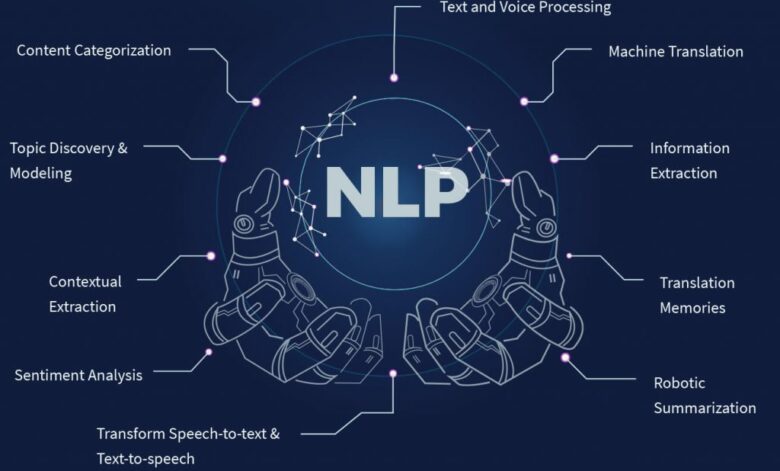Creating captivating digital experiences has become a crucial endeavor in our increasingly digital world. From the moment we wake up until we go to bed, we are immersed in a sea of websites, apps, and online platforms.
These digital experiences shape our lives, whether searching for information, connecting with friends, or even indulging in entertainment. Behind every website and app lies a complex web of technology, design, and creativity.
This article delves into the fascinating website development and technology world, emphasizing the importance of crafting exceptional digital experiences. We will also touch upon the specialized realm of sports betting app development, visit here to read more about the vital fusion of technology and user experience in this area.
Website Development: The Digital Canvas

Imagine a website as a blank canvas. Just as a painter uses brushes and colors to create a masterpiece, web developers use various tools, languages, and frameworks to craft digital wonders.
Here’s a simplified breakdown of how website development works:
Planning
The first step is planning. Developers work closely with clients to understand their objectives, target audience, and features required. Think of this as laying the foundation for a building.
Design
Once the plan is in place, designers create a visually appealing layout. They decide on colors, fonts, and the overall look and feel of the website, similar to an architect designing the facade of a building.
Development
This is where the magic happens. Developers use programming languages like HTML, CSS, and JavaScript to bring the design to life. They ensure that the website is responsive, functional, and user-friendly. It’s like constructing the building’s framework and wiring.
Testing
Before the website goes live, it undergoes rigorous testing to fix bugs or issues. This phase is equivalent to construction quality control–ensuring everything works smoothly.
Launch
Finally, the website is launched and made available to the public. It’s like opening the doors to a new building.
Maintenance
Websites need ongoing maintenance and updates to stay relevant and secure. Think of this as regular upkeep for a building to ensure it doesn’t deteriorate over time.
While this is a simplified overview, it underscores the complexity of website development. Each step requires careful attention to detail and collaboration among various experts.
The Role of Technology in Crafting Digital Experiences

Technology is at the heart of creating memorable digital experiences. It enables websites and apps to deliver content quickly, offer interactive features, and adapt to different devices seamlessly.
Here are some key technologies that drive website and app development:
- Responsive Web Design:
In a world where people use various devices, from smartphones to desktop computers, responsive design ensures that websites adapt to different screen sizes. This technology is like having a building that can change its layout depending on the number of visitors.
- Content Management Systems (CMS)
CMS platforms like WordPress and Drupal simplify website management by allowing users to update content without deep technical knowledge. Think of this as a building that can be rearranged easily without tearing it down.
- Cloud Computing
Cloud services, like Amazon Web Services (AWS) and Microsoft Azure, provide scalable and reliable hosting solutions for websites and apps. It’s like having a building that can expand or shrink based on demand.
- APIs (Application Programming Interfaces)
APIs allow different software systems to communicate and share data. They enable the integration of various services into websites and apps, enhancing their functionality. Think of this as connecting different building parts to make it more versatile.
- Security Measures
Just as buildings have security systems to protect against theft and vandalism, websites and apps employ encryption and firewalls to safeguard user data.
Now, let’s dive into a specialized area where technology plays a pivotal role: sports betting app development.
Sports Betting App Development: A Niche in the Digital Landscape

Source: habwin.com
Sports betting apps are a unique breed of digital experiences catering to sports enthusiasts and punters. Creating a successful sports betting app involves a distinct set of challenges and opportunities.
- Real-time Data Integration:
Sports betting apps rely on real-time data to provide up-to-the-minute odds and scores. Developers must integrate with data sources and ensure seamless updates, like the constant newsroom information flow.
- User Experience
User experience is paramount in the world of sports betting. Apps must be intuitive, easy to navigate, and visually appealing to engage users. It’s like designing a stadium for an optimal viewing experience.
- Security
Sports betting apps handle sensitive financial information, making security a top priority. Advanced encryption and authentication mechanisms are used to protect user data, much like the high-security measures in a bank.
- Payment Processing
These apps need to facilitate seamless payment transactions, just as a cashier at a sports event handles ticket sales and concessions.
- Legal Compliance
Depending on the region, sports betting apps must adhere to complex legal and regulatory requirements, similar to how sports events are subject to various rules and regulations.
Sports betting app development is a specialized field within app development, requiring a deep understanding of the sports industry, gambling laws, and the technology stack. It’s a niche where technology and user experience intersect to create a thrilling digital experience.
The Future of Digital Experiences

As technology evolves, so will the art of creating digital experiences. Virtual reality (VR), augmented reality (AR), and artificial intelligence (AI) are already making inroads into the digital landscape.
These technologies have the potential to revolutionize how we interact with websites and apps:
VR and AR
Imagine browsing a furniture website and visualizing how a new sofa would look in your living room through AR. Or attending a live sports event from the comfort of your home using VR. These technologies have the power to transform our online experiences into immersive adventures.
AI and Personalization
AI algorithms are becoming increasingly sophisticated in understanding user preferences. Websites and apps can use AI to tailor content and recommendations, creating highly personalized digital experiences. If you’d like to learn more, you can read more about AI and personalization.
Mobile-First Design
Mobile-First Design prioritizes the development of websites and apps for mobile devices. It involves creating responsive layouts and user interfaces optimized for smaller screens. With the increasing use of smartphones, this approach ensures that users have a seamless and engaging experience, regardless of the device they use to access digital content.
Accessibility
Accessibility in digital experiences is about making websites and apps usable for everyone, including individuals with disabilities. It involves implementing features like alternative text for images, keyboard navigation, and screen reader compatibility. By adhering to accessibility standards, developers ensure that their digital products are inclusive and can be used by a wider audience.
Analytics and Data
Analytics and Data play a crucial role in understanding user behavior and improving digital experiences. By using analytics tools, developers and designers gather valuable insights into how users interact with websites and apps. This data-driven approach helps in making informed decisions, optimizing content, and enhancing the overall user experience.
Cross-Browser Compatibility
Cross-Browser Compatibility ensures that websites and apps perform consistently across different web browsers such as Chrome, Firefox, Safari, and Edge. Developers need to test and optimize their digital products to ensure they function correctly and look the same, irrespective of the browser users prefer. This practice ensures a broader reach and avoids compatibility issues for diverse user bases.
Voice and Natural Language Processing (NLP)

Source: folio3.ai
Voice assistants like Siri and Alexa are becoming integral to our lives. In the future, websites and apps may rely on voice commands and NLP to enhance user interaction, making it as natural as a conversation with a friend.
Final Words
Creating digital experiences is a dynamic and ever-evolving field driven by technology, design, and innovation. Whether you’re developing a sports betting app or a simple website, the goal is to captivate and engage users. As we look to the future, the possibilities for crafting exceptional digital experiences are limitless, and the tools and technologies at our disposal continue to expand.
Remember that the art of website and app development is a collaborative effort that combines technical expertise with creativity to build digital worlds that enrich our lives, one click at a time. So, whether you’re a developer, designer, or simply an end-user, embrace the ever-evolving landscape of digital experiences and enjoy exploring its vast potential.




